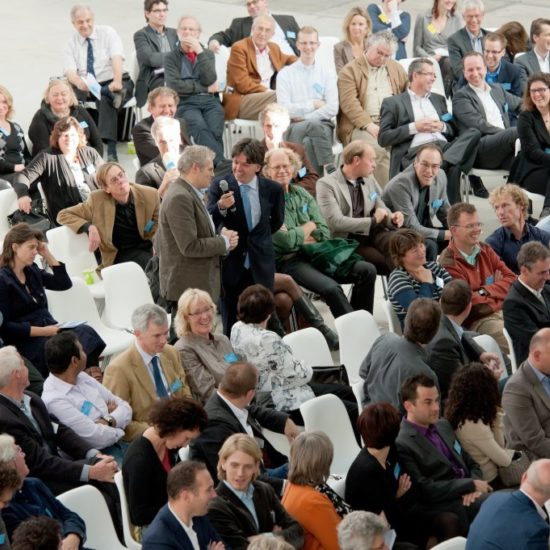Great content, inspiring speakers, a beautiful venue, top-notch catering and ofcourse the perfect moderator ... they are all worthless when the event is poorly designed.
A great meeting design consists of a few elements. In this series of blog-posts, we will look at them one by one. This article is about: the welcome & registration.
The succes of a meeting is also dependant on the expectations that participants have of it. If the preliminary phase is not designed well, the moderator is 0-1 down immediately. On the other hand: when extra effort is put into how the participant is received and welcomed, there's a big step in the direction of an effective day.
That's why the walk-in needs to be designed with great care. We always take a few elements into account.
Tone
Every meeting has its own tone of voice: relaxed, pressing, result driven or festive. This should be a deliberate choice. The welcome & registration can play an important role in setting this tone.
If - for instance - the reception crew behaves businesslike and standoffish, while the day is supposed to be about building new, cordial relationships, something is wrong. Even a tiny detail like choosing between thank you and thank you, sir makes a world of difference.
You could even take this one step further and instruct the crew which questions to ask participants upon arrival; simply, to already open a specific door in their brain.
Connection
Networking is an important element at most meetings. You can already start that by matching people up at the walk-in, instead of betting on serendipity. This often is a great alterative to simply hanging around untill the event starts or to talking to that guy that you know for 10 years already.
But pay attention: sometimes mandatory activities can backfire. So make it a deliberate choice to plan no workformats, mandatory elements or voluntary interaction.
Assignment
Another option is to give your participants a (simple) working assigment, while waiting for the opening. For one, this will freshen up the waiting period; especially when you're alone. But more importantly: you can use these excersizes to get your participants in the right gear for the meeting or to collect valuable information that you can use later on.
These assigmnents caneither be individual or groupwise.
Set dressing
Everyone know them: the mind numbingly dull and uninspired lobbies that meeting organisers have us hang around in. They can take away any happy anticipation that you arrived with.
It's especially the set dressing of the lobby that can help set the tone. Small, cosy areas if that matches the set-up of the event or if peer2peer dialogue is needed. Pingpong tables, when you need a vibrant and playful atmosphere. Larger debating arena's, for already sharpening exchange of perspectives. The options are endless.
Atmosphere
The power of music, pictures, lighting etc. is very underrated.
It is proven for instance, that people at security checks at rock concerts become less agressive and pass throught quicker, when there's music playing. Or if security-crew is singing; even when off-key.
Likewise, pictures shown in the reception area will contribute to participants blending in with the program.
The invitation
Although strictly not being a part of the welcome & registration, the invitation is crucial. By choosing the appropriate tone of voice, setting the right expectations and maybe even by adding some pre-conferece interaction, you already prime participants for the welcome ánd the rest of the event.
Conclusion
The welcome & registration can play an important part in setting expectations and can help kick-start your event, even before it has actually started.
Jan-Jaap


